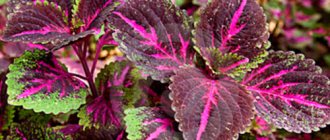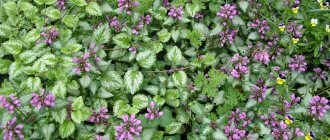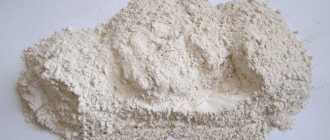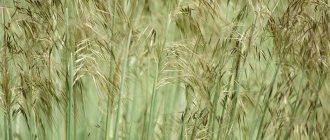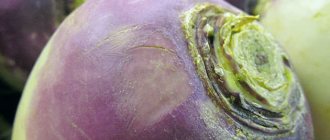Useful properties of safflower
The beneficial properties of safflower are due to the chemical composition of the flowers and seeds of the plant. Thus, flowers contain chalcone glycosides, including: cartamidine, cartamine, isocartamine. The seeds, in turn, contain 60% fatty oils.
Safflower is used in the pharmaceutical industry, as the herb has a number of medicinal properties:
- A decoction of safflower herb is used to relieve chronic constipation. It improves intestinal motility and helps normalize its microflora.
- It is recommended to use safflower infusion as an auxiliary treatment for erosive and ulcerative lesions of the stomach and intestines. The product can be used for gastritis, as well as for various forms of hepatitis.
- Safflower has a diuretic effect. In this regard, it is recommended to be used both for general cleansing of the body from toxins and other breakdown products, and for the treatment of diseases of the urinary system. Infusions and decoctions based on safflower help get rid of swelling.
- By using safflower, you can improve blood circulation in the body. The plant has the property of thinning the blood, which is the treatment and prevention of atherosclerosis, heart attack, and stroke.
- Safflower is used as a prophylactic against the threat of developing psoriasis and malignant tumors. The substances included in its composition help normalize metabolic processes in the body, cleanse the liver and kidneys of decay products, and have antitoxic properties.
- It is recommended to use safflower for the treatment of gynecological diseases, to normalize the menstrual cycle, and for amenorrhea in adolescence. Safflower is able to relax smooth muscles, it is recommended as an adjuvant for heavy bleeding during menopause, and for prolonged postpartum bleeding.
- As part of complex therapy, safflower is used to get rid of endocrine pathologies. In particular, safflower oil helps to quickly get rid of extra pounds, which is especially important for diabetes.
- Infusion and decoction of safflower helps reduce rheumatic pain characteristic of rheumatoid arthritis. Moreover, decoctions and infusions based on the flowers of the plant can be taken internally and used externally.
- The body's immune defense is enhanced, and the immune response is normalized with the proper use of safflower-based medicines.
So, safflower is used for medicinal purposes to achieve a diuretic, choleretic, laxative, and blood-thinning effect.
Useful properties of safflower used in the food industry. Safflower flowers are widely used to produce dyes that are harmless to human health - red, yellow, and saffron. The coloring agent is cartamine. Dyes are used in the food industry; they are added mainly to confectionery products to give them the required color. The oil extracted from safflower is used to make margarine. Its flowers are used to make medicinal tea.
Useful properties of safflower used in cosmetology. Safflower oil is of particular value for the cosmetology industry. It consists mainly of linoleic acid, which has a moisturizing effect, nourishes and strengthens the skin, and increases its blood circulation.
Properties of safflower honey
Safflower is not considered a honey plant, so it should be planted together with other honey plants. Flowers appear from mid-summer and bloom until the end of August. If conditions are favorable, then from 5 hectares of safflower, bees can produce up to 2.5 kg of honey daily.
The properties of safflower honey are as follows:
- Honey contains a significant amount of potassium and iodine, slightly less sodium, manganese, copper, calcium, phosphorus, selenium and other minerals. Safflower honey contains amino acids, enzymes, proteins, dextrins, vitamin C, vitamin E, vitamin PP, B vitamins. In addition, it contains fatty acids: palmitic, lauric, arachidonic, oleic and others.
- Safflower honey is used in cosmetology and medicine; masks and applications are made from it for scabies, dermatitis, rosacea, burns, psoriasis, and lichen. Honey helps prevent age-related changes in the skin, prevents its aging, and has a tonic effect.
- Masks based on safflower honey are useful for hair and scalp. They improve hair nutrition, making it smoother and shiny. As part of complex therapy, safflower honey helps fight baldness.
- Honey is taken internally not only as a delicacy, but also as a prophylaxis for diseases such as thrombophlebitis, arterial hypertension, heart attack, stroke, amenorrhea, endometritis, gastritis, peptic ulcer of the stomach and intestines, enterocolitis.
- Compresses with honey help with arthritis, helping to reduce pain and relieve inflammation.
- The use of natural safflower honey will help in the treatment of sore throat, laryngitis, pharyngitis, and bronchitis. It is advisable to take it orally to treat any colds. If honey is mixed with warm milk, you can get a mild analgesic effect for a sore throat. In addition, honey has a bactericidal and mucolytic effect.
- To maintain immunity, it is useful to drink a glass of water with honey diluted in it every morning on an empty stomach (2 teaspoons per glass). You can enrich this immunostimulating drink with lemon juice. Such a useful habit will have a positive effect on metabolism, metabolism will be normalized, appetite will be improved, and swelling will be reduced.
- If you take safflower honey before bed, you can get rid of insomnia, reduce the negative impact of stress on the psyche, and more effectively relieve nervous tension.
Safflower honey should be purchased only from trusted producers who value their reputation and will not allow it to be spoiled by selling counterfeits. You should not choose honey based on its bright orange color, as freshly extracted safflower honey has a clear consistency and a slight yellow tint when viewed in the sun. Frozen safflower honey has a lard-like consistency and a light yellow color.
Biological description
One or two-year-old plant with a strong, erect and densely branched stem. The surface of the shoots is light green and smooth. Bush height - 40-150 cm.
Foxes are elongated, green, with small spines along the edges. The flowers are small, tubular, red, yellow or orange, collected in inflorescences-baskets.
The fruit is oval with four sides, white and with a glossy surface.
Different parts of the plant are used in different fields of activity - flowers, leaves, fruits.
Safflower tea
Safflower tea is brewed from the flowers of the plant. Its long-term use contributes to a pronounced diuretic effect, so strong that a person is able to experience the urge to urinate when the bladder is empty. In this case, you should stop drinking tea for two weeks.
It is recommended to drink safflower tea for heart failure, anemia, numbness of the upper and lower extremities. If you drink tea for six months, you can get rid of the manifestations of these diseases, according to Chinese traditional medicine.
Benefits of safflower tea:
- Normalization of the digestive process;
- Prevention and treatment of gastritis, ulcers, hepatitis C;
- Improving skin nutrition;
- Cleansing the liver and kidneys;
- Analgesic effect;
- Blood thinning;
- Elimination of the consequences of strokes;
- Normalization of blood pressure;
- Increased overall tone.
Safflower tea should be stored in a cool, dark place. It should not be brewed with other teas. To prepare the drink, you will need to place a quarter teaspoon of tea in a cup and pour boiling water over it. The time for tea to brew is from 20 minutes to half an hour. After this, the drink is filtered and drunk. It's good to drink a cup of safflower tea at night. However, even during the daytime, the benefits of tea will be invaluable: in addition to all the above properties, it works as an intestinal antiseptic and effectively destroys pathogenic bacteria entering it from the outside.
Another option for safflower tea is safflower water. It is an effective treatment for psoriasis. To do this, it is necessary that some part of safflower is always present in drinking water. To prepare it you will need 4 liters of boiled water, to which add a teaspoon of dry raw materials. Then the resulting composition is boiled for several minutes, cooled, filtered and put in the refrigerator. You should drink at least 4 glasses of this water per day.
Contraindications
Despite the numerous beneficial and medicinal properties, as well as receiving many positive reviews from patients about the use of this plant, before directly consuming safflower, consider all contraindications.
Taking medications based on this plant is not recommended:
- People suffering from diarrhea and other intestinal disorders, as they can increase intestinal peristalsis and aggravate the patient's condition.
- Women with a history of uterine bleeding.
- Pregnant women due to increased risk of miscarriage.
- Patients with chronic diseases that require constant medication.
If you are a supporter of treatment with traditional methods, it will certainly be useful for you to become familiar with the medicinal properties of cinquefoil. Sverbiga grass is considered an equally effective remedy.
Uses of safflower oil
Safflower oil is extracted from the seeds of the plant by cold pressing. It contains about 80% linoleic acid, which is beneficial for humans, but is not synthesized by the body itself. In addition, the oil also contains other useful acids.
Uses of safflower oil:
- Taking the oil internally can improve appetite and reduce cholesterol levels in the blood. This is an excellent prevention of atherosclerosis.
- The oil is a source of not only beneficial acids, but also vitamin E and vitamin K.
- Use safflower oil to get rid of extra pounds. The decomposition of subcutaneous fat occurs due to the action of the conjugated form of linoleic acid.
- Safflower oil is used as a mild laxative when taken orally.
- Oil, when applied to the skin, works as an antioxidant. It is ideal for caring for dry sensitive skin, softening and moisturizing it. Oil retains moisture inside the epidermis and regulates the hydrolipid balance of the skin.
- The oil, when used topically, can eliminate capillary patterns and rosacea and improve skin color. At the same time, it acts systemically, influencing the cause of the problem.
- Safflower oil is used as a sunscreen.
- Use oil to care for thin, dry hair. It allows you to renew their structure, restore their strength, shine and beauty.
- The oil can be used in cooking to prepare any dishes: sauces, salads, dressings, side dishes, etc. You can bake and fry using it.
Safflower oil is used as follows:
- In its pure form, or as an additive to balm and shampoos (a tablespoon of oil per 100 ml of product) for healthy hair;
- As a base for night cream for dry skin;
- To improve the properties of cosmetic products (10-20% oil from the total volume of the selected product);
- As an additive to anti-aging cosmetics (up to 25% of the total volume of the selected product);
- As a base oil for massage;
- As a basis for applications in the treatment of rosacea.
Planting and caring for safflower
Planting and caring for safflower is not difficult. The plant is not demanding on the soil, is not afraid of weeds, it can be planted after any cultivated plants that grew in this place previously. However, the next time you can sow safflower in the same place only after five years.
The soil should be prepared in advance, in the fall. At the same time, you need to apply nitrogen fertilizers, which safflower prefers. It will be necessary to harrow and dig up the soil not only in the fall, but also in the spring, before planting.
Before introducing seeds into open ground, they are treated with a weak solution of potassium permanganate. This must be done a month before sowing. You can sow seeds as early as April. The plant is frost resistant. The distance between the rows should be at least 50 cm. The first shoots can be seen 7-14 days after planting, and the plant will begin to bloom after 2 months.
The plant has a strong root system, so it tolerates drought well. Safflower should be watered no more than once a week; it is best to do this in the evening. A condition for good safflower growth is the absence of weeds. Weeding and loosening should be done at the time when the first 4 leaves appear. Spraying the grass is not recommended. You can replenish safflower with a solution of manure. No further special processing is required.
The crop should be harvested after it is fully ripe. Safflower is resistant to diseases and pests, so growing it is not difficult. The collected herbs are dried and stored in a dark, well-ventilated area.
